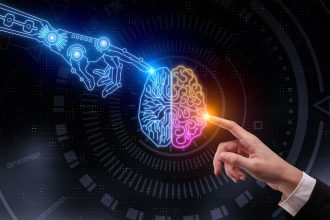Generative AI in video game development could transform the way people work or fail to match human creativity. On Monday, The New York Times profiled efforts to add generative AI content to live gameplay experiences, as well as how game developers are using generative AI behind the scenes.
As in other industries, the use of generative AI in game development raises questions. Will it eliminate jobs? Will it diminish human creativity? Or will it become an essential skill that unlocks new opportunities?
Benefits and uses of generative AI in video games
The 2025 State of the Game Industry report, released in March 2025 by Informa Festivals — the company behind the Game Developers Conference — found that one-third of developers use generative AI to streamline game development. Generative AI can be used in games for prototyping, initial concept development, or the automatic creation of dynamic landscapes, sound effects, and other in-game elements.
Video game companies continue to explore player-facing uses for generative AI.
In March, a leaked demonstration produced by Sony showed the character Aloy from the Horizon franchise responding to prompts with AI-generated, real-time dialogue.
In May, Google Cloud proposed generative AI could support “living games,” which evolve to respond organically to each player’s experience. Game companies such as Capcom are already using generative AI, including Google’s Vertex AI and Gemini, to iterate on item and environment art.
Tech demo explored generative dialogue in ‘The Matrix’
As an example of the “unsettling” power of generative AI, The New York Times cited a 2023 tech demonstration from now-shuttered Replica Studios. The demo, available as a download for The Matrix Awakens — an environment (not a game per se) — showcased Unreal Engine capabilities on the PlayStation 5 or Xbox Series X|S.
Replica Studios partnered with OpenAI to create a development tool that allowed game developers to define how characters can respond to natural language. The Times noted that, while the characters in the demo spoke about existing in a virtual environment, this was because the characters were prompted to respond as if they were in “The Matrix,” not because they were self-aware.
Risks to job security and creativity
While some see AI as a tool to enhance workflows, others warn of risks. The use of generative AI in game development raises ethical concerns, may expose security vulnerabilities, and can introduce new challenges to the creative process.
There have been high-profile layoffs in the video game industry in recent years, including about 9,000 job cuts at Microsoft. While the layoffs at Microsoft’s video game studios are not directly attributed to AI replacing human workers, the restructuring comes at the same time as an effort to improve efficiency by automating work with AI.
In addition, critics argue that AI-generated content lacks artistic depth. They assert that creative efforts such as video game development benefit from the narrative sensibilities of human writers or the collaboration between writers and other team members.
Some also raise concerns over copyrighted works, occurring generative AI tools of unfairly profiting from existing creative works.
Microsoft’s Muse is “a generative AI model designed to transform how games are conceptualized, developed, and preserved.” Read about Muse on our sister site eWeek.





